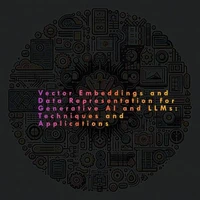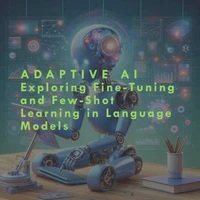Multiple Choice Questions for Data Science Certification
Par :Formats :
Disponible dans votre compte client Decitre ou Furet du Nord dès validation de votre commande. Le format ePub est :
- Compatible avec une lecture sur My Vivlio (smartphone, tablette, ordinateur)
- Compatible avec une lecture sur liseuses Vivlio
- Pour les liseuses autres que Vivlio, vous devez utiliser le logiciel Adobe Digital Edition. Non compatible avec la lecture sur les liseuses Kindle, Remarkable et Sony
 , qui est-ce ?
, qui est-ce ?Notre partenaire de plateforme de lecture numérique où vous retrouverez l'ensemble de vos ebooks gratuitement
Pour en savoir plus sur nos ebooks, consultez notre aide en ligne ici
- FormatePub
- ISBN8223071129
- EAN9798223071129
- Date de parution27/08/2024
- Protection num.pas de protection
- Infos supplémentairesepub
- ÉditeurDraft2Digital
Résumé
Authored by experts in the field, this book covers essential topics ranging from computational graphs to collaborative filtering, ensuring a thorough understanding of key concepts. The book begins by delving into computational graphs, providing detailed explanations and practice questions to reinforce learning. Readers learn how to construct and manipulate computational graphs, essential for understanding various machine learning algorithms. Next, the book explores the intricacies of the Banyan Tree algorithm, offering insights into its structure, operations, and applications in data science tasks.
With practical examples and exercises, readers can master this powerful algorithm and its implementations. Collaborative filtering, another crucial aspect of data science, is thoroughly covered, with a focus on recommendation systems and user-item interactions. Readers gain a deep understanding of collaborative filtering techniques and their significance in personalized recommendation systems. Random Forest, a widely used ensemble learning method, is extensively discussed, with practice questions to solidify comprehension.
Readers learn how Random Forest algorithms work, their advantages, and how to effectively implement them in various scenarios. Cosine distance, a fundamental concept in similarity measurement, is explored in detail, along with its applications in text mining, recommendation systems, and clustering algorithms. Lastly, the book covers binary trees, providing insights into their structure, traversal methods, and applications in data science.
With comprehensive practice questions accompanying each topic, readers can assess their understanding and readiness for certification exams.
With practical examples and exercises, readers can master this powerful algorithm and its implementations. Collaborative filtering, another crucial aspect of data science, is thoroughly covered, with a focus on recommendation systems and user-item interactions. Readers gain a deep understanding of collaborative filtering techniques and their significance in personalized recommendation systems. Random Forest, a widely used ensemble learning method, is extensively discussed, with practice questions to solidify comprehension.
Readers learn how Random Forest algorithms work, their advantages, and how to effectively implement them in various scenarios. Cosine distance, a fundamental concept in similarity measurement, is explored in detail, along with its applications in text mining, recommendation systems, and clustering algorithms. Lastly, the book covers binary trees, providing insights into their structure, traversal methods, and applications in data science.
With comprehensive practice questions accompanying each topic, readers can assess their understanding and readiness for certification exams.
Authored by experts in the field, this book covers essential topics ranging from computational graphs to collaborative filtering, ensuring a thorough understanding of key concepts. The book begins by delving into computational graphs, providing detailed explanations and practice questions to reinforce learning. Readers learn how to construct and manipulate computational graphs, essential for understanding various machine learning algorithms. Next, the book explores the intricacies of the Banyan Tree algorithm, offering insights into its structure, operations, and applications in data science tasks.
With practical examples and exercises, readers can master this powerful algorithm and its implementations. Collaborative filtering, another crucial aspect of data science, is thoroughly covered, with a focus on recommendation systems and user-item interactions. Readers gain a deep understanding of collaborative filtering techniques and their significance in personalized recommendation systems. Random Forest, a widely used ensemble learning method, is extensively discussed, with practice questions to solidify comprehension.
Readers learn how Random Forest algorithms work, their advantages, and how to effectively implement them in various scenarios. Cosine distance, a fundamental concept in similarity measurement, is explored in detail, along with its applications in text mining, recommendation systems, and clustering algorithms. Lastly, the book covers binary trees, providing insights into their structure, traversal methods, and applications in data science.
With comprehensive practice questions accompanying each topic, readers can assess their understanding and readiness for certification exams.
With practical examples and exercises, readers can master this powerful algorithm and its implementations. Collaborative filtering, another crucial aspect of data science, is thoroughly covered, with a focus on recommendation systems and user-item interactions. Readers gain a deep understanding of collaborative filtering techniques and their significance in personalized recommendation systems. Random Forest, a widely used ensemble learning method, is extensively discussed, with practice questions to solidify comprehension.
Readers learn how Random Forest algorithms work, their advantages, and how to effectively implement them in various scenarios. Cosine distance, a fundamental concept in similarity measurement, is explored in detail, along with its applications in text mining, recommendation systems, and clustering algorithms. Lastly, the book covers binary trees, providing insights into their structure, traversal methods, and applications in data science.
With comprehensive practice questions accompanying each topic, readers can assess their understanding and readiness for certification exams.






















